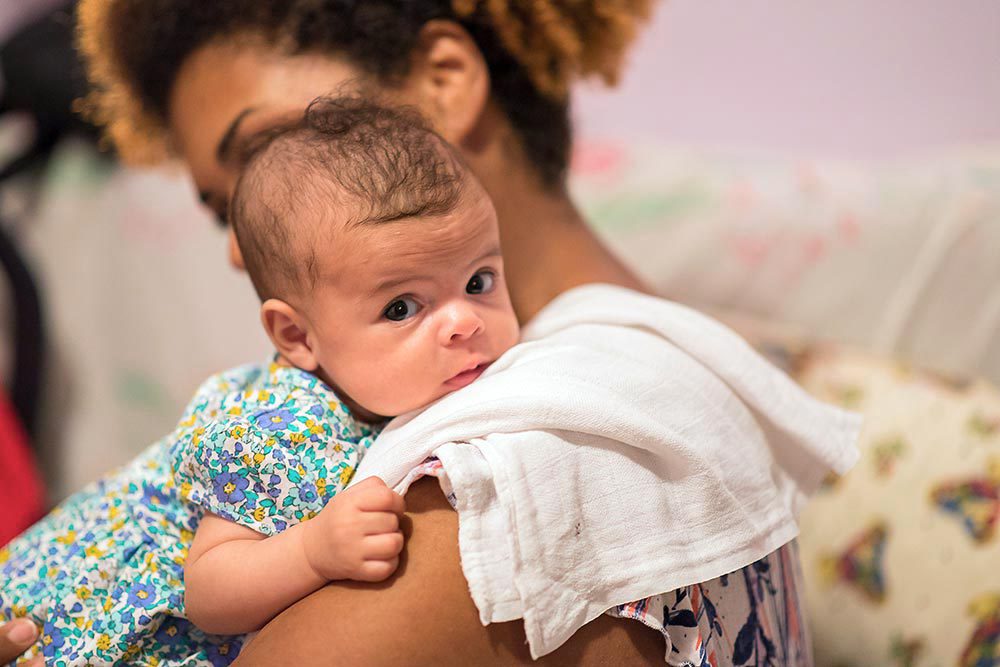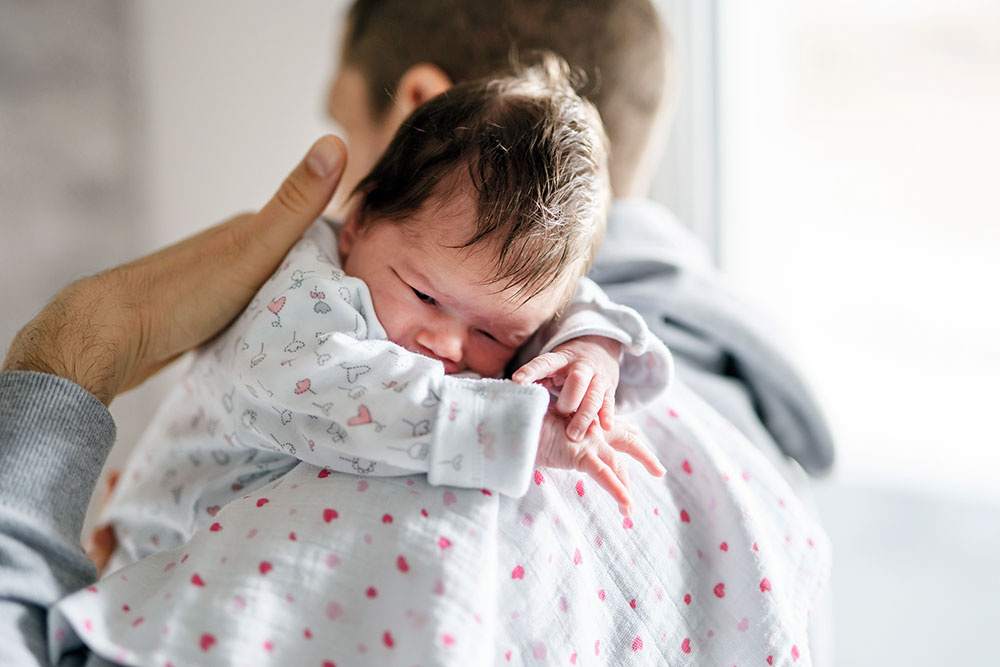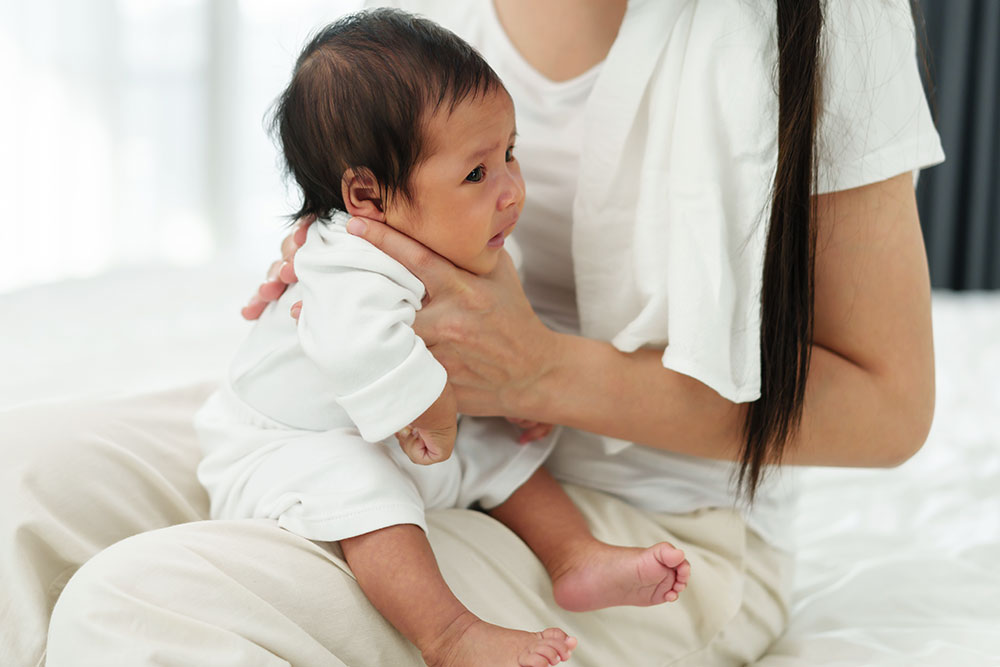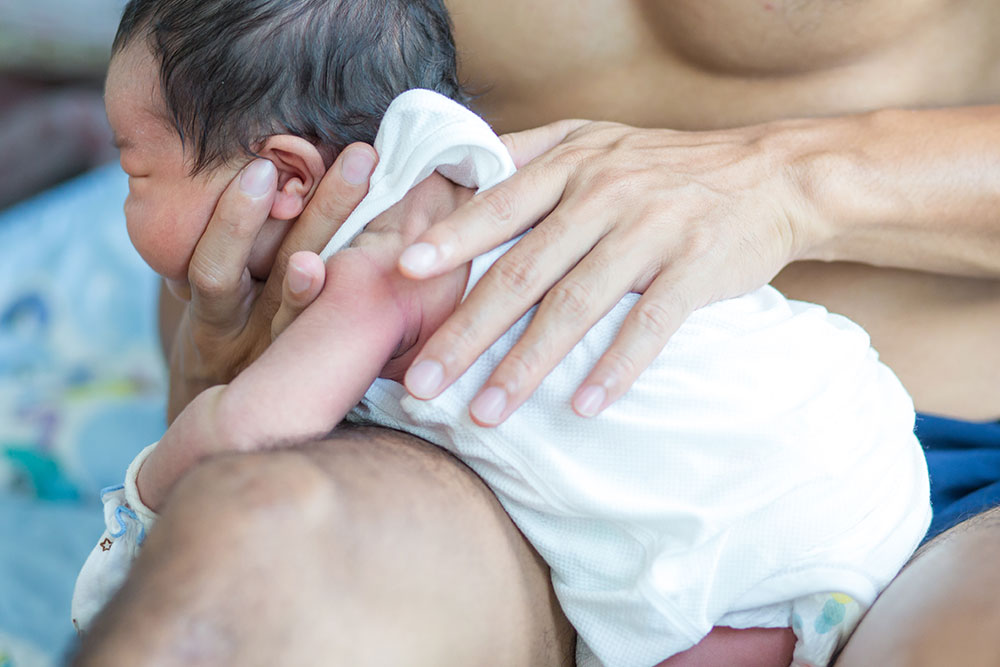How to Burp a Baby

Expert advice on everything you need to know about burping a baby.
Expert: Lyndsey Garbi, MD
You feed your little one with breast milk or formula, doing your best to avoid air bubbles in the process, pat-pat-burp, and you’re done, right? Well, not always. Burping a baby can be tougher than you might think, and the aftermath of an un-burped baby can be brutal—if their tummy hurts, you’re going to know about it.
Don’t worry; this is not an art that only a few can master. With the proper guidance (and technique), you’ll be a pro at easing your baby’s tummy pains in no time. To help provide you with the best advice, we interviewed Lyndsey Garbi, MD, a board-certified pediatrician and neonatologist, and chief medical officer and co-founder of Blueberry Pediatrics.
Why is it Important to Burp a Baby?
Before getting into the details of burping techniques, it helps to understand why this practice is important—after all, most of us don’t need to burp multiple times throughout a meal in order to walk away without a stomach ache.
It is common for babies to swallow air during the feeding process. According to the American Academy of Pediatrics (AAP), when your baby’s tummy is filled with a lot of air, it can lead to more spitting up. The AAP says, “As the bubbles escape, they have an annoying tendency to bring the rest of the stomach’s contents up with them.” (Note: This is not the same as vomiting, which the AAP says is more forceful and involves using the abdominal muscles.)
Spit-up is usually inevitable (there is a reason why burp cloths belong on everyone’s baby registry). Still, the frequency and severity of your baby’s spit-up can be somewhat controlled by belching them throughout their feeding. There is no exact number of times a newborn baby should be burped in a feeding session, though. Dr. Garbi says, “All babies are different; some may need more frequent breaks and burping, and some may need less,” so expect some trial and error before finding the right balance for your little one.
What are the Common Baby Burping Positions?
There are three common positions for burping a baby:
The over-the-shoulder hold. This is probably the most natural position for the majority of new parents. Many of us instinctively put our baby upright against our shoulder and pat their back for our first burp attempt. To do it safely, make sure your baby’s chin is resting on your shoulder and that you support their head and shoulder area with one of your hands while gently rubbing and patting your baby’s back with the other.
The sitting position. Sitting with your legs together in front of you, turn your baby so they are sitting in an upright position on your lap with baby’s face to one side (obviously, they can’t sit independently yet, so you’ll need to offer a good deal of support to baby’s head). Place one hand under baby’s chin to hold their head and body in place, and use the other hand to pat or rub their back. Dr. Garbi cautions, “you must make sure the head is not slumped over in a chin-to-chest position if [burping] in the sitting position.”
The across-the-legs technique. Some babies will release trapped gas if you lay them face down on their stomach across your legs. With this technique, be sure to support their chin in the palm of your hand and not put any pressure on baby’s chest or around their throat. Once settled, use your free hand to gently rub or pat your baby’s back.
Try not to get too comfortable once you’ve mastered one burping position. “Babies will change constantly, so what works one day may not work the next,” explains Dr. Garbi, adding, “Stay patient and flexible.”
What is the Proper Way to Burp a Baby?
Finding a good position for burping your baby is one thing; applying pressure to release the gas is another. Your new infant is so tiny and fragile that the thought of pounding on their back might put you right over the edge, but don’t worry, your little one is tougher than they appear.
By no means should you get overly rough with your tiny babe, but when it comes to burping, it does take a firm hand to get a good belch out. Offering too gentle pats will get you nowhere with most babies, so be prepared to work up a strong, steady tap to get those potential tummy-hurting gas bubbles out of your baby’s system. (As an aside, the art of burping is a good lesson in parenting: It’s likely one of your first experiences in the challenge of finding the right balance between being constantly gentle yet firm.)
If you’re having trouble getting those burps out or aren’t sure how hard you should be patting, ask your pediatrician or a fellow parent for guidance. You might be slightly horrified when you first witness these pats in action, but once you hear that reassuring loud burp come from your baby, you’ll understand how effective a strong (but still gentle!) touch can be.
You may find that you also need to work a little back rub into the burping process to help your baby get those gas bubbles out. Rubbing your baby’s back has a good effect on helping your baby ease tummy discomfort—and in some cases, it works much better than the pat. Start rubbing on their lower back and work your way to the top, where the burp will likely work its way loose.
How Long Does it Take to Burp a Baby?
Again, there’s no magic number here—because all babies are different. That being said, Dr. Garbi notes, “It shouldn’t take more than 1 to 5 minutes to get a burp directly after a feeding.” If the burp isn’t coming easy, she says, “You can take breaks to rub their back, talk to them, reposition, feed a little more, and then try again.”
What Should You Do If You Can’t Get Your Baby to Burp?
Now that you understand why burping a baby is so important, you might slightly panic if you get through a whole feeding without a single burp. In this case, Dr. Garbi assures it will all be OK.
“As long as you are trying [to burp your baby] with the proper technique, you don’t always need to get a burp out of them. You will get to know your baby’s needs over time, and if they don’t burp regularly and they are OK, then there is no need to perseverate over not getting a burp out of them.”
Of course, if you’re struggling to get a burp out of your baby and they exemplify signs of gassiness, fussiness, discomfort, or are otherwise not acting like themselves, it’s best to call your pediatrician for next steps.
Learning how to burp your baby effectively seems intimidating at first, but once you get the hang of it, it will become second nature. It won’t take long for you and your little one to find your feeding and burping groove. But, no matter what, always come prepared with a burp cloth (seriously, trust us on this one).










